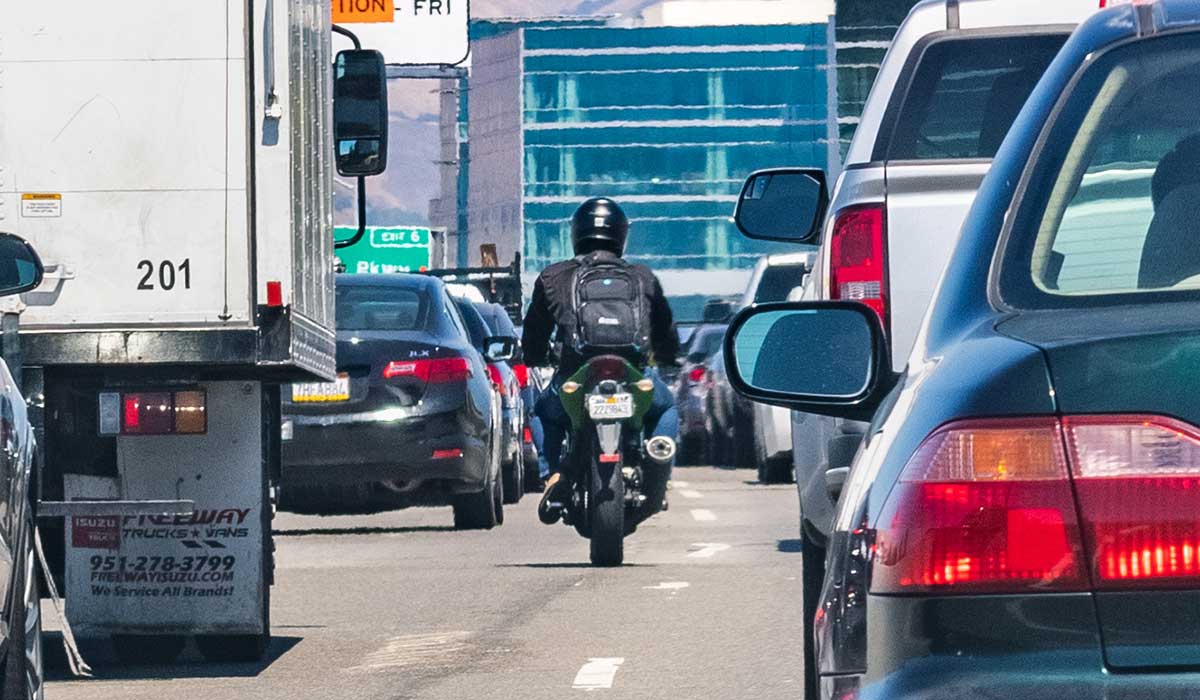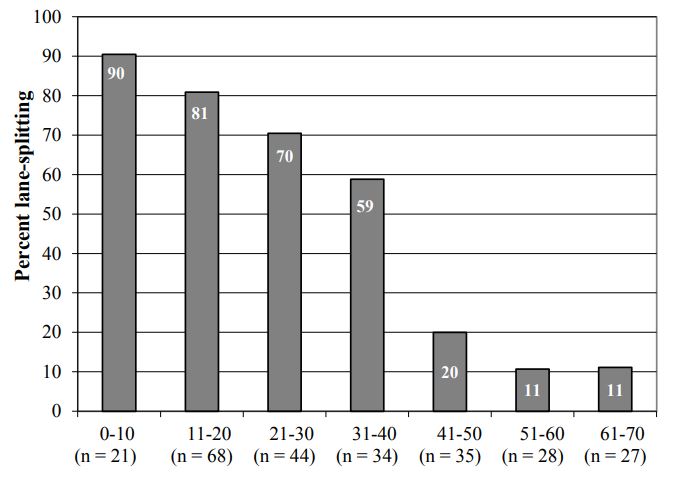2019 Motorcycle “Lane Filtering” Law, Explained

Posted By
Clint Lawrence, founder of Motorcycle Shippers. Helping give riders more freedom to enjoy the bikes they love. [email protected]
The State of Utah usually brings to mind Mormons and mountains, but the most recent legislative session has added a third “m” to that list: motorcycles. Since May 14, 2019 motorcyclists in Utah have been given the ability to legally practice “lane filtering,” thanks to a new bill signed into law by Gov. Gary Herbert back in March.
At a basic level, “lane filtering” occurs when a rider moves between two lanes of slow-moving or stopped traffic to get to the front of the intersection. The Utah Highway Patrol is being proactive about the new law, launching an awareness campaign to inform motorists a month and a half ahead of the change. The Utah Department of Safety released this video explaining the reasoning behind the law—allowing motorcycles to get out from in between traffic so they can avoid rear-end collisions—and how it should be applied. But despite these efforts, there has been considerable confusion about the new rules of the road. (This viral video sums up a lot of the questions surrounding how exactly riders should lane filter safely.)
Whether you’re living in the Beehive State, getting up to Tahoe sometime soon or want to keep up on the latest laws that affect riders, read this quick rundown on Utah’s lane filtering law to get some clarity.
Is Lane Splitting Legal in the US?
Utah is now only one of two U.S. states that allow motorcycles to bypass slower lanes of traffic. California, the state with the most riders on the road, allows motorcyclists to “lane split” by going between cars while moving at freeway speeds as traffic slows down on the roadway. Utah’s law differs from California’s approach, stating that motorcycles can only “filter” to the front of the intersection when cars are stopped. The confusion over the lane filtering law is understandable.
(Side note: Like Utah’s regulation, the California lane splitting law elicited confusion from the public. In one instance, the California Highway Patrol issued guidelines on safe lane splitting but had to remove them a few weeks later after someone complained that it didn’t have the authority to post the guidelines in the first place. If you’re interested, you can see the CHP’s response here.)
The new Utah law also lays out additional rules that motorcyclists must adhere to when lane filtering. According to the Utah Highway Patrol, motorists:
-
- Can move to the front of a traffic light on roads where the speed limit is 45 mph or less and there are two or more adjacent traffic lanes in the same direction of travel
- Can only move to the front when vehicles are stopped
- Can’t filter lanes at more than 15 mph
The law also states that maneuvering around lanes has to be done safely, which leaves some ambiguity about what exactly constitutes “safe” lane splitting. In the video mentioned earlier in this article (here’s the link again, just in case), the Utah Department of Public Safety attempts to show what safe lane filtering looks like. UHP Sgt. Nick Streets is optimistic, telling KSL, “I hope they use due diligence and care not to try to do it where they’re really going to be threading the needle to where they have a lane that’s wide enough to accommodate if their bike has saddlebags or longer handlebars. If you take off a car’s mirror, that’s on you. You’re going to have to stop, talk to the police and file an accident report.”
Is lane splitting safe?
According to state statistics, more than 1,200 motorcyclists in Utah were rear-ended between 2011 to 2017. By the beginning of September 2018, there were

already more motorcycle deaths in Utah than in all of 2017. The majority of these occurred during the “100 Deadliest Days of Summer,” the period between Memorial Day and Labor Day. Rear-end accidents often involve serious injury and, in some cases, even death.
The American Motorcycle Association has long held that lane splitting makes roads safer for riders and relieves traffic congestion, a view based largely on the successful use of the practice in California and a research study conducted by the University of California, Berkeley. Led by the university’s Safe Transportation Research and Education Center, the UC Berkley study found that lane filtering can be a safe practice if traffic is moving slower than 50 mph and riders aren’t moving more than 15 mph faster than the other vehicles on the road.
What do you think, should more states allow lane splitting? And as a rider, how would you define “safe” lane splitting?
